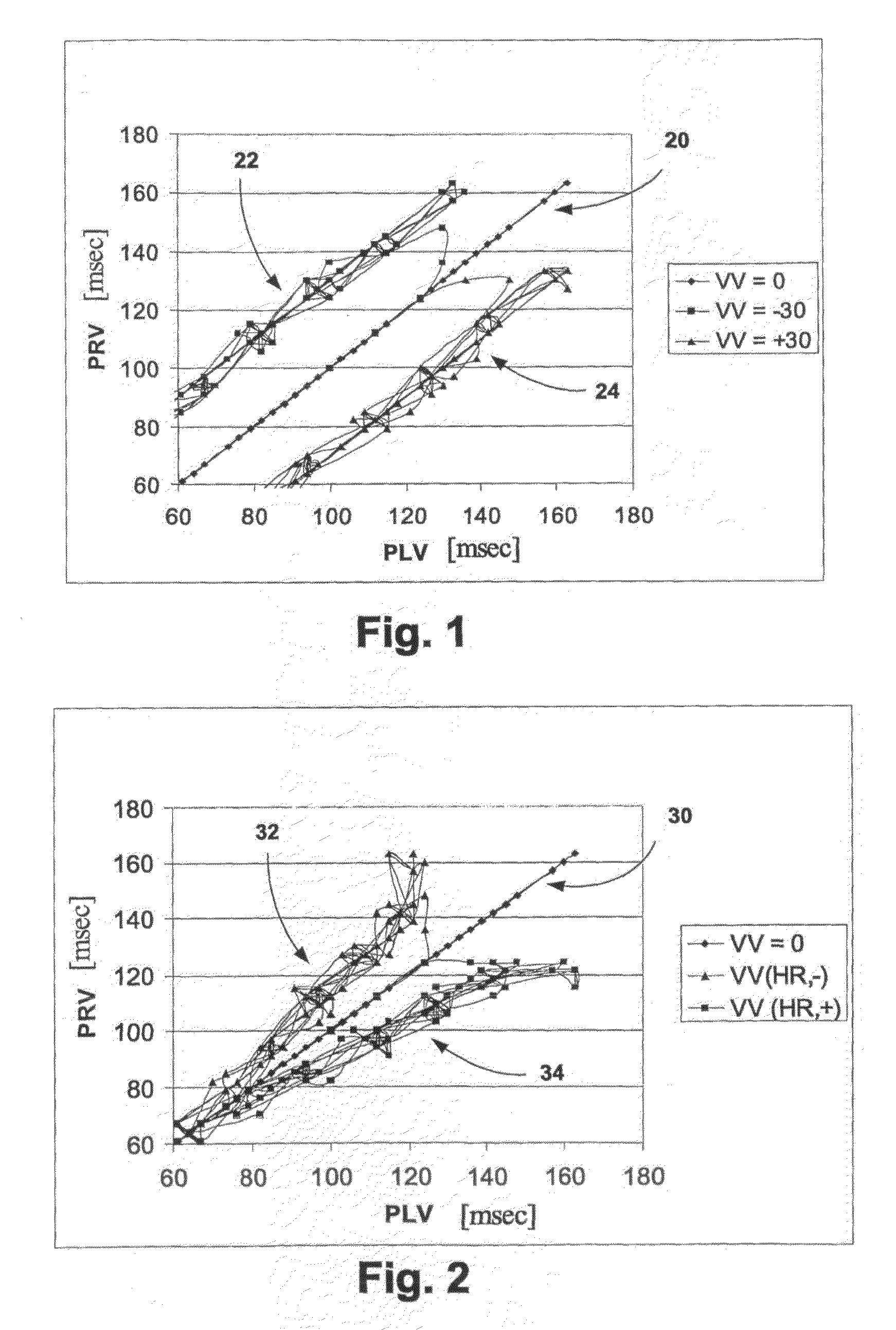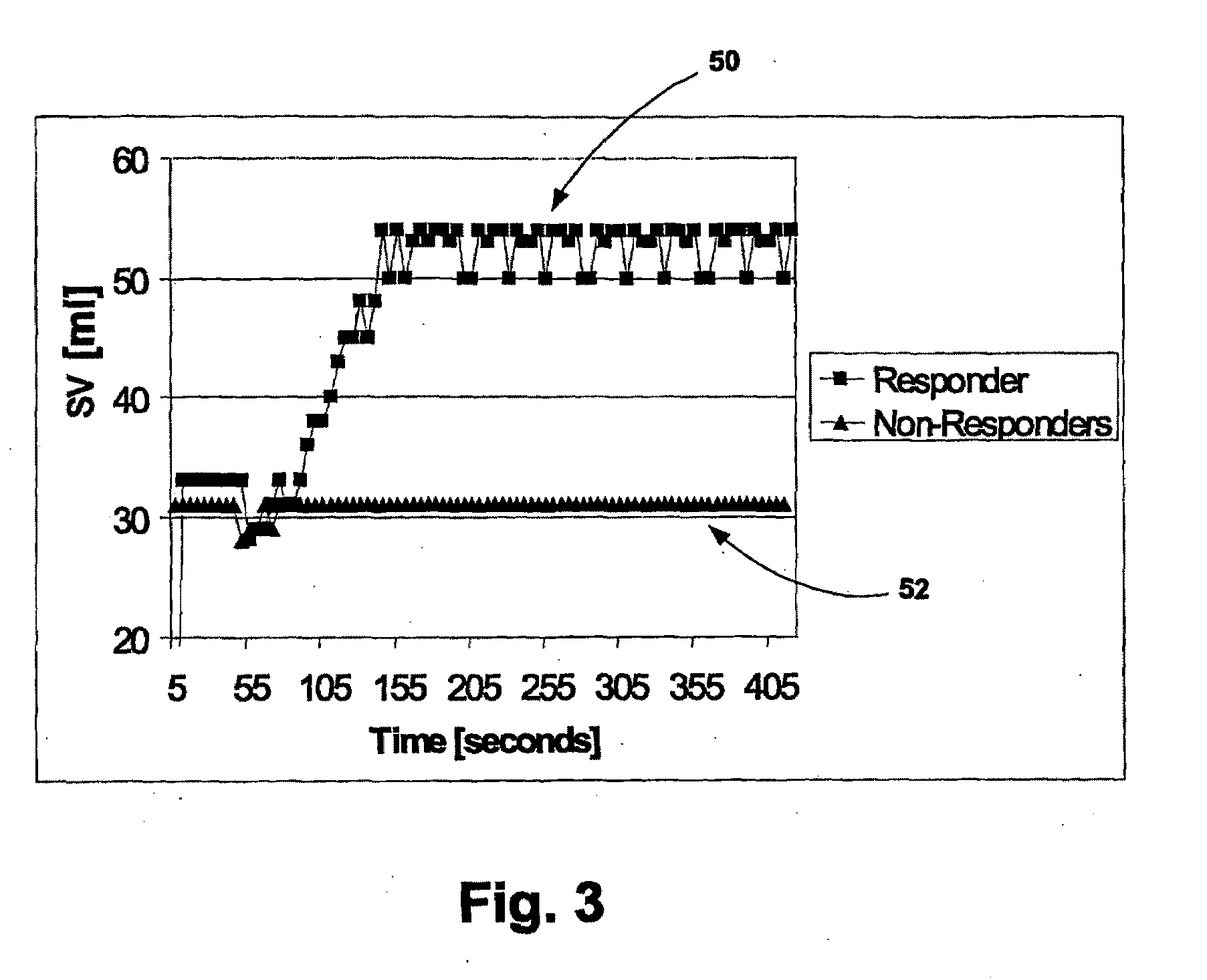Optimizing and monitoring adaptive cardiac resynchronization therapy devices
- Summary
- Abstract
- Description
- Claims
- Application Information
AI Technical Summary
Problems solved by technology
Method used
Image
Examples
Embodiment Construction
[0007]The present invention provides an electrophysiological (EP) testing system, which enables the pacing of the ventricles, sensing the intracardiac electrograms and monitoring hemodynamic data in real time. An alternative application, is one in which the system of the invention employs an implanted biventricular pacemaker in which both AV delay and the VV interval are device parameters, programmed by a programmer or changed dynamically by an adaptive CRT and CRT-D (CRT device combined with a defibrillator) device, and the hemodynamic performance (such as the stroke volume) is monitored by an implanted sensor or by a non-invasive monitoring appliance.
[0008]The present invention provides a method for dynamically diagnosing and optimising CRT (and CRT-D) devices or adaptive CRT (and CRT-D) devices, as described hereinbelow. For each heart rate, rest heart rate and at gradually higher heart rates, the pacing interval of the right and left ventricle are changed systematically. Accordi...
PUM
 Login to View More
Login to View More Abstract
Description
Claims
Application Information
 Login to View More
Login to View More - R&D Engineer
- R&D Manager
- IP Professional
- Industry Leading Data Capabilities
- Powerful AI technology
- Patent DNA Extraction
Browse by: Latest US Patents, China's latest patents, Technical Efficacy Thesaurus, Application Domain, Technology Topic, Popular Technical Reports.
© 2024 PatSnap. All rights reserved.Legal|Privacy policy|Modern Slavery Act Transparency Statement|Sitemap|About US| Contact US: help@patsnap.com










